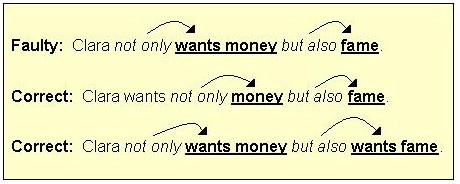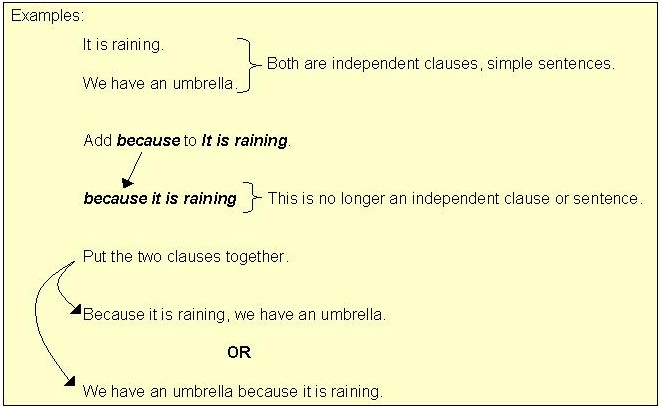|
CONJUNCTIONS
Conjunctions are words used as joiners.
Different kinds of conjunctions join different
kinds of grammatical structures.
The following are the kinds of conjunctions:
A. COORDINATING
CONJUNCTIONS (FANBOYS)
for, and, nor, but, or, yet, so
Coordinating
conjunctions join equals to one another:
words to words, phrases to
phrases, clauses to
clauses.

Coordinating conjunctions usually form looser
connections than other conjunctions do.

Coordinating conjunctions go in between
items joined, not at the beginning or end.

Punctuation with coordinating conjunctions:
When a coordinating conjunction joins two
words, phrases, or subordinate clauses, no comma should be placed before the
conjunction.

A coordinating conjunction joining three or
more words, phrases, or subordinate clauses creates a series and
requires commas between the elements.

A coordinating conjunction joining two
independent clauses creates a compound sentence
and requires a comma before the coordinating
conjunction

B. CORRELATIVE
CONJUNCTIONS
|
either. . .or
|
both. . . and
|
|
neither. . . nor
|
not only. . .
but also
|
These pairs of conjunctions require equal
(parallel) structures after each one.

C. CONJUNCTIVE
ADVERBS
These conjunctions join independent clauses
together.
The following are frequently used conjunctive
adverbs:
|
after all
|
in addition
|
next
|
|
also
|
incidentally
|
nonetheless
|
|
as a result
|
indeed
|
on the contrary
|
|
besides
|
in fact
|
on the other hand
|
|
consequently
|
in other words
|
otherwise
|
|
finally
|
instead
|
still
|
|
for example
|
likewise
|
then
|
|
furthermore
|
meanwhile
|
therefore
|
|
hence
|
moreover
|
thus
|
|
however
|
nevertheless
|
|

|
Punctuation:
|
Place a semicolon before the conjunctive adverb
and a comma after the
conjunctive adverb.
|
D. SUBORDINATING CONJUNCTIONS
These words are commonly used as subordinating
conjunctions
|
after
|
in order (that)
|
unless
|
|
although
|
insofar as
|
until
|
|
as
|
in that
|
when
|
|
as far as
|
lest
|
whenever
|
|
as soon as
|
no matter how
|
where
|
|
as if
|
now that
|
wherever
|
|
as though
|
once
|
whether
|
|
because
|
provided (that)
|
while
|
|
before
|
since
|
why
|
|
even if
|
so that
|
|
|
even though
|
supposing (that)
|
|
|
how
|
than
|
|
|
if
|
that
|
|
|
inasmuch as
|
though
|
|
|
in case (that)
|
till
|
|
Subordinating conjunctions also join two clauses
together, but in doing so, they make one clause dependent (or "subordinate")
upon the other.

A subordinating conjunction may appear at a
sentence beginning or between two clauses in a sentence.
A subordinate conjunction usually provides a
tighter connection between clauses than a coordinating conjunctions does.
| Loose: |
It is raining, so we have an
umbrella. |
| Tight: |
Because it is raining, we
have an umbrella. |
|
Punctuation Note:
|
|
|
|
When the dependent clause is placed first in a
sentence, use a comma between the two clauses.
When the independent clause is placed first and
the dependent clause second, do not separate the two clauses with a comma.
|
|
|

-
|